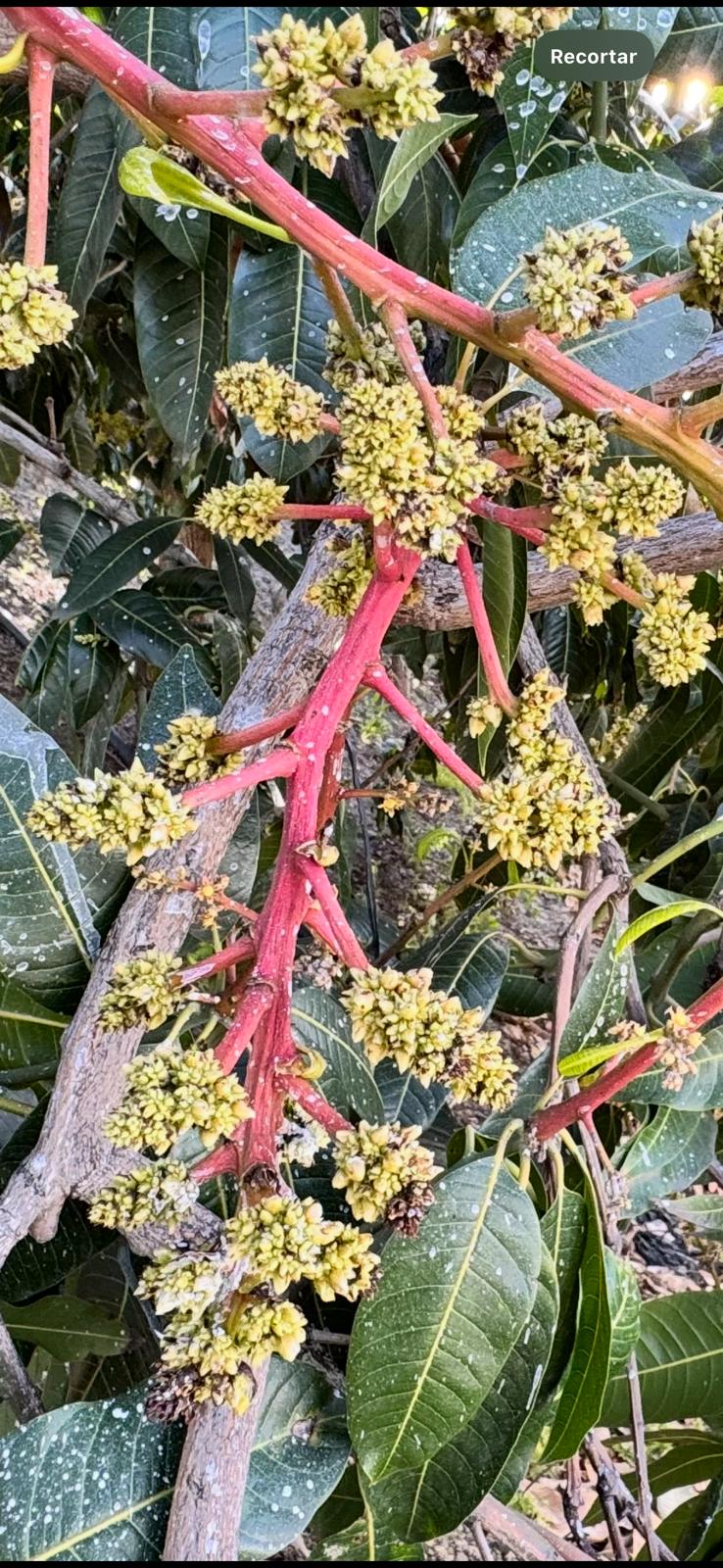
Floral malformation of the mango
Share
Mango flower malformation: causes, impact, and solutions
Mango blossom malformation is one of the most challenging problems faced by producers of this tropical fruit, threatening both yields and crop quality. While its causes can be diverse, there are key strategies for managing it effectively. In this post, we'll explore the main causes of this condition, its impact on production, and what measures can help you combat it.
🌸 What is floral malformation?
Floral malformation is a disorder that affects the floral and vegetative tissues of the mango ( Mangifera indica ) plant, resulting in abnormal flower development. Normally, a healthy inflorescence maintains a balance between male and hermaphrodite flowers, which produce fruit. However, when a malformation occurs, this balance is disrupted: the flowers develop abnormally, appear deformed, atrophied, and, in many cases, are unable to bear fruit.
This problem not only causes a reduction in tree yield, but also increases susceptibility to pathogens, further affecting crop productivity.
🧪 Main causes of floral malformation
There are several factors involved in this phenomenon, ranging from genetics to environmental conditions and agricultural practices. Below, we describe the most relevant ones:
-
Presence of the fungus Fusarium mangiferae
This fungus is identified as one of the main causes of flower malformation. It infects tree tissues, promoting disorganized growth in flowers and shoots. It is particularly problematic in conditions of high humidity and moderate temperatures, which facilitate its spread. -
Abiotic stress
Conditions such as drastic temperature changes, flooding, drought, or nutrient-poor soils can trigger a higher incidence of malformation. These disturbances affect the tree's ability to develop healthy flower structures. -
Improper pruning practices
Poor pruning management can stimulate the growth of vegetative tissues that are more susceptible to colonization by fungi or other harmful agents, directly affecting the flowers. -
Excessive use of nitrogen fertilizers
Although nitrogen is essential for plant growth, an excess of this nutrient can induce excessive vegetative growth that displaces normal flower formation.
🛠️ Practical solutions to combat flower malformation
Fortunately, there are proven strategies that can mitigate this problem and help farmers regain stable production in their crops. Here are some key recommendations:
-
Integrated crop management
Controlling Fusarium mangiferae is essential. Preventive antifungal treatments are recommended during critical periods, such as after pruning or during periods of high humidity. Furthermore, the use of resistant varieties can be a long-term tool to reduce the incidence of malformation. -
Balance in fertilization
It works based on a soil analysis to apply fertilizers at the correct rates. It reduces nitrogen levels in favor of elements such as phosphorus and potassium, which promote fruit set and development of flowers and fruits. -
Strategic pruning and removal of affected tissues
Remove malformed branches or flowers immediately to prevent the spread of Fusarium and other pathogens. Prune regularly to improve ventilation and sun exposure. -
Efficient irrigation
Maintain an adequate irrigation regime to avoid water stress, but avoid flooding conditions that promote soil-borne diseases. -
Constant monitoring
Conduct regular inspections of your orchard. Identifying any abnormal symptoms early can make the difference in preventing widespread spread.
Implications and conclusion
Mango flower malformation is more than an aesthetic problem; it directly affects productivity and, ultimately, farmers' incomes. However, with proper management that combines pathogen control, balanced agronomic practices, and prevention, its impact can be significantly reduced.
Investing in sustainable strategies will not only protect your crop now, but also ensure your trees' long-term performance. Remember: a healthy tree is the foundation of a successful harvest. 🌳🍂
Have you encountered this problem in your crop? Share your experiences in the comments!
